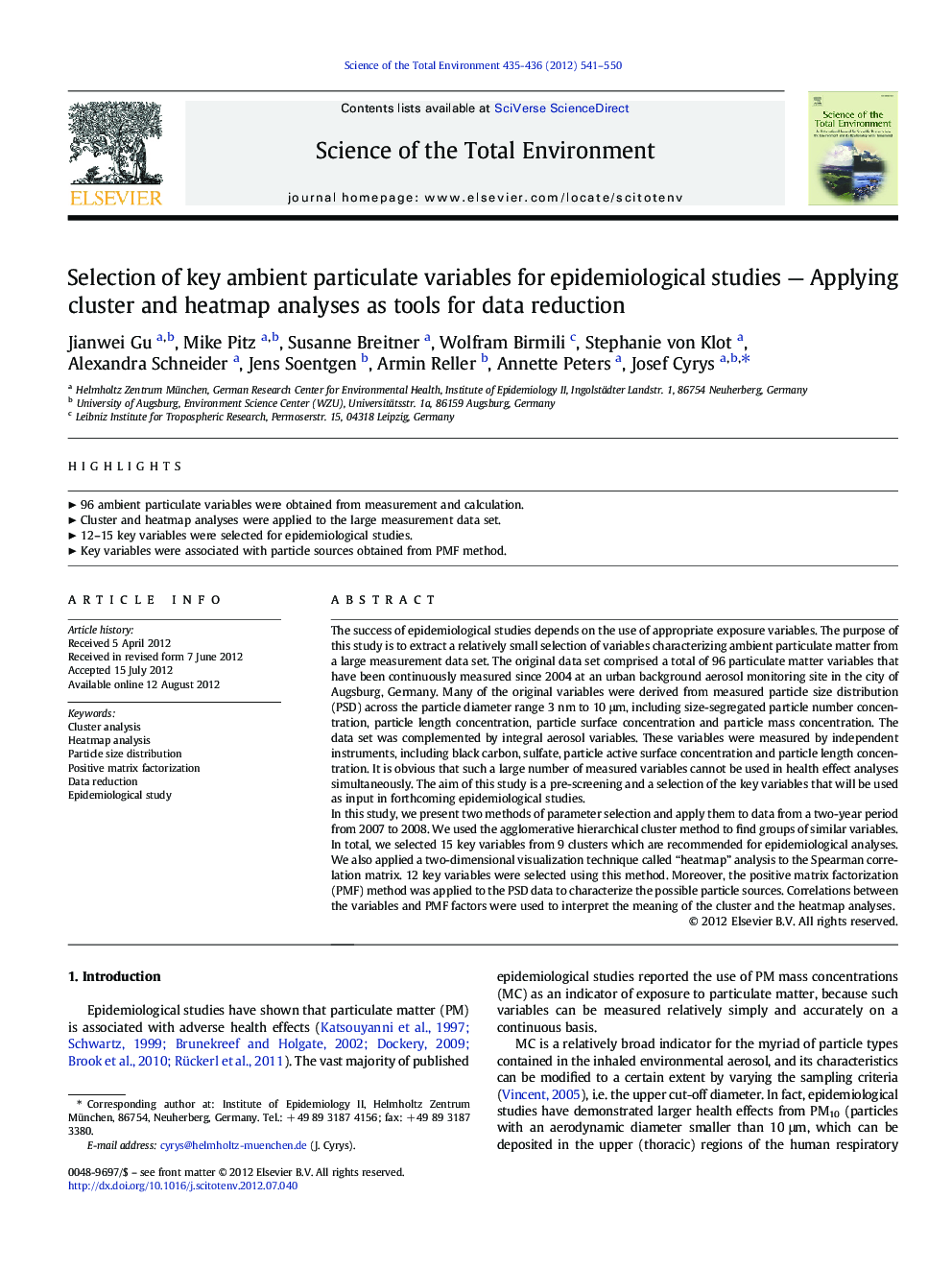| کد مقاله | کد نشریه | سال انتشار | مقاله انگلیسی | نسخه تمام متن |
|---|---|---|---|---|
| 4429233 | 1619817 | 2012 | 10 صفحه PDF | دانلود رایگان |

The success of epidemiological studies depends on the use of appropriate exposure variables. The purpose of this study is to extract a relatively small selection of variables characterizing ambient particulate matter from a large measurement data set. The original data set comprised a total of 96 particulate matter variables that have been continuously measured since 2004 at an urban background aerosol monitoring site in the city of Augsburg, Germany. Many of the original variables were derived from measured particle size distribution (PSD) across the particle diameter range 3 nm to 10 μm, including size-segregated particle number concentration, particle length concentration, particle surface concentration and particle mass concentration. The data set was complemented by integral aerosol variables. These variables were measured by independent instruments, including black carbon, sulfate, particle active surface concentration and particle length concentration. It is obvious that such a large number of measured variables cannot be used in health effect analyses simultaneously. The aim of this study is a pre-screening and a selection of the key variables that will be used as input in forthcoming epidemiological studies.In this study, we present two methods of parameter selection and apply them to data from a two-year period from 2007 to 2008. We used the agglomerative hierarchical cluster method to find groups of similar variables. In total, we selected 15 key variables from 9 clusters which are recommended for epidemiological analyses. We also applied a two-dimensional visualization technique called “heatmap” analysis to the Spearman correlation matrix. 12 key variables were selected using this method. Moreover, the positive matrix factorization (PMF) method was applied to the PSD data to characterize the possible particle sources. Correlations between the variables and PMF factors were used to interpret the meaning of the cluster and the heatmap analyses.
► 96 ambient particulate variables were obtained from measurement and calculation.
► Cluster and heatmap analyses were applied to the large measurement data set.
► 12–15 key variables were selected for epidemiological studies.
► Key variables were associated with particle sources obtained from PMF method.
Journal: Science of The Total Environment - Volumes 435–436, 1 October 2012, Pages 541–550